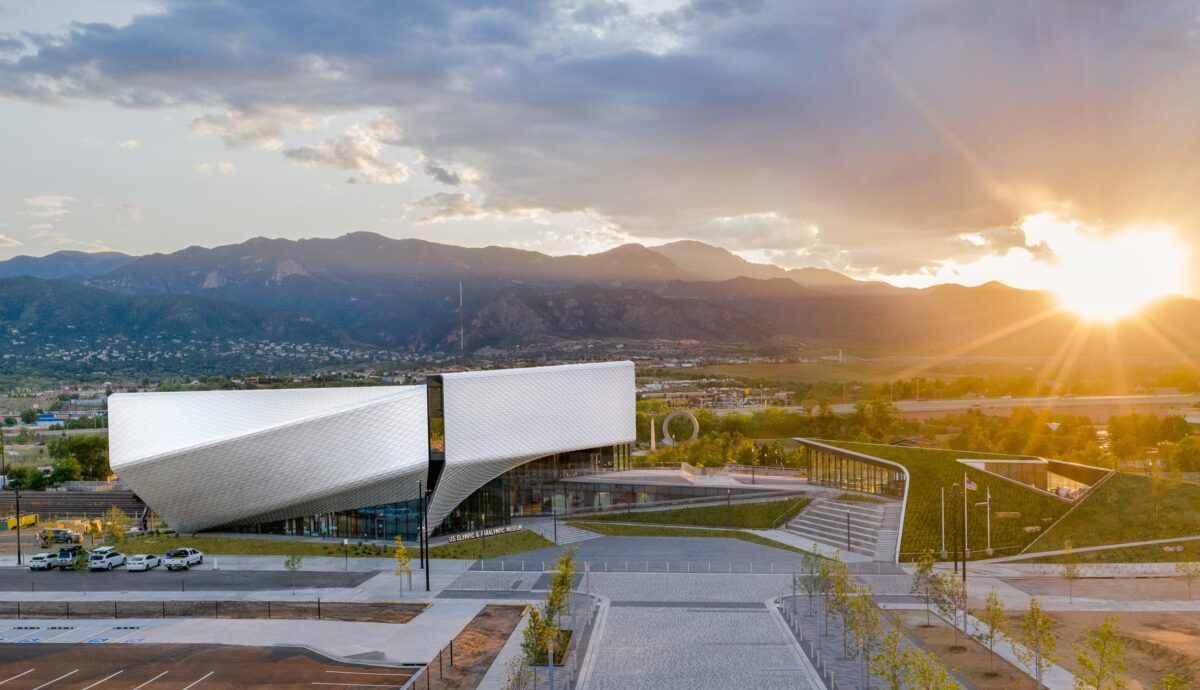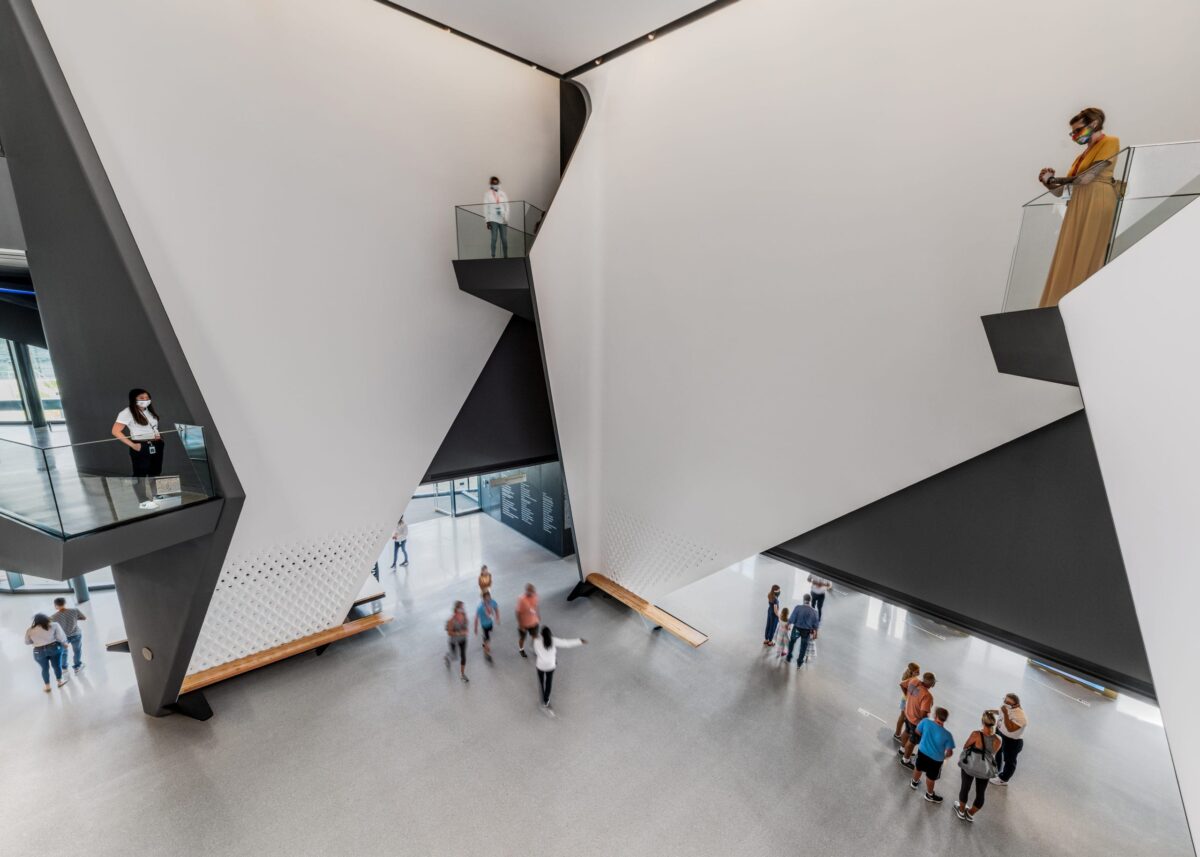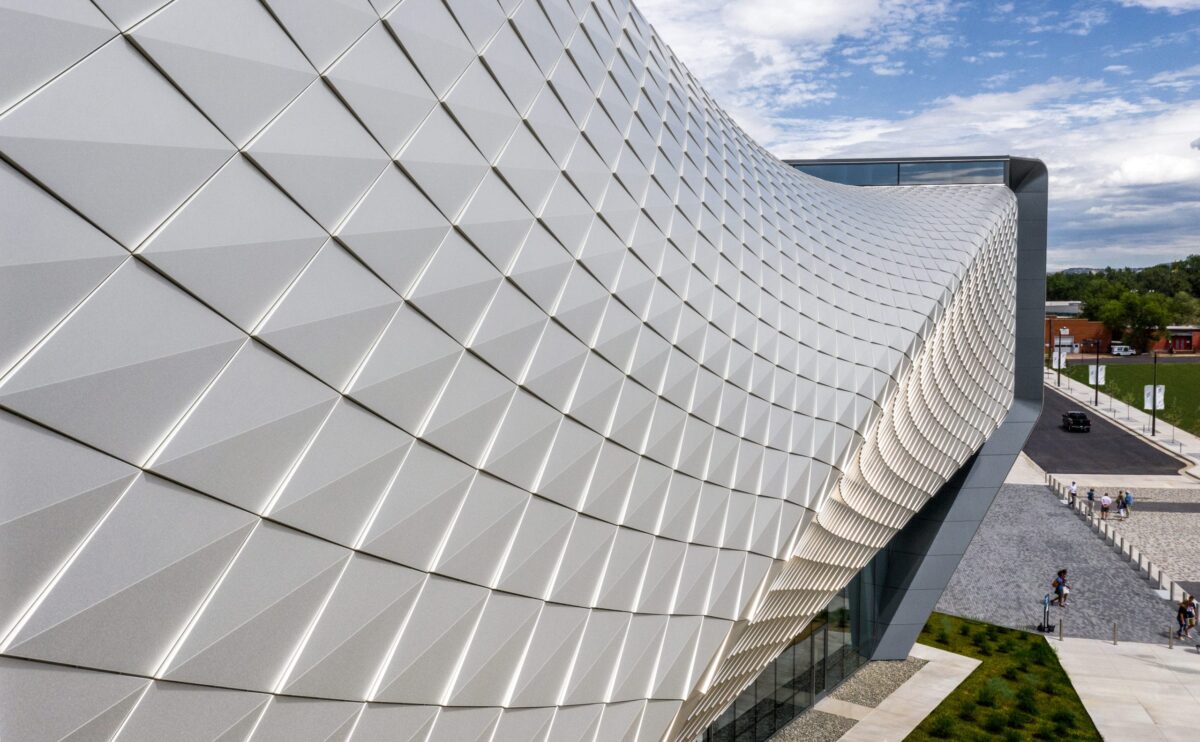The new museum in ‘Olympic City USA’ – with a twisting, silver form – is one of the most accessible in the world

Words by Francesca Perry
This summer should have seen another global celebration of sport as the Olympic and Paralympic Games arrived in Japan’s capital Tokyo. For the first time in its 124-year modern history, however, the Games have been delayed by a year, due to the extensive impact of the Covid-19 pandemic.
Although we may not be enjoying watching the Games this August, a major museum which celebrates them has opened in Colorado Springs, US. Centred on Team USA and the country’s history of participation in the Games, the new US Olympic and Paralympic Museum has been designed by New York-based practice Diller Scofidio + Renfro (DS+R) with a twisting, geometric form.

The 5,575 sq m museum is intended as an anchor to the new City for Champions District in Colorado Springs, which is home to the United States Olympic Committee and the US Olympic & Paralympic Training Center – earning it the nickname ‘Olympic City USA’.
Comprised of four spiralling volumes set around a 12m-tall central atrium, the museum contains 1,858 sq m of galleries, a 130-person theatre and an event space. Visitors to the museum take a lift to the top floor and navigate galleries via a continuous, spiralling, descending path, which helps make the building one of the most accessible museums in the world.

The design team on the project consulted a committee of Paralympic athletes and people with disabilities to ensure that all visitors could experience the museum together.
The main building façade comprises over 9,000 folded, anodised, diamond-shaped aluminium panels, which continually reflect the ever-shifting light of Colorado Springs, alternating the building’s external appearance between white, blue-grey and silver.

The museum is accompanied by a terraced plaza with views on to the nearby Rocky Mountains and integrated amphitheatre seating for 230 people which enables outdoor events. A café-restaurant on the north side of the plaza, with a green landscaped roof, doubles up as a potential education space, expanding the museum’s offer.
Later this year a new pedestrian bridge by DS+R will also be completed, connecting the museum to the adjacent America the Beautiful Park and extending an existing local bike network.
All photographs by Jason O’Rear
















